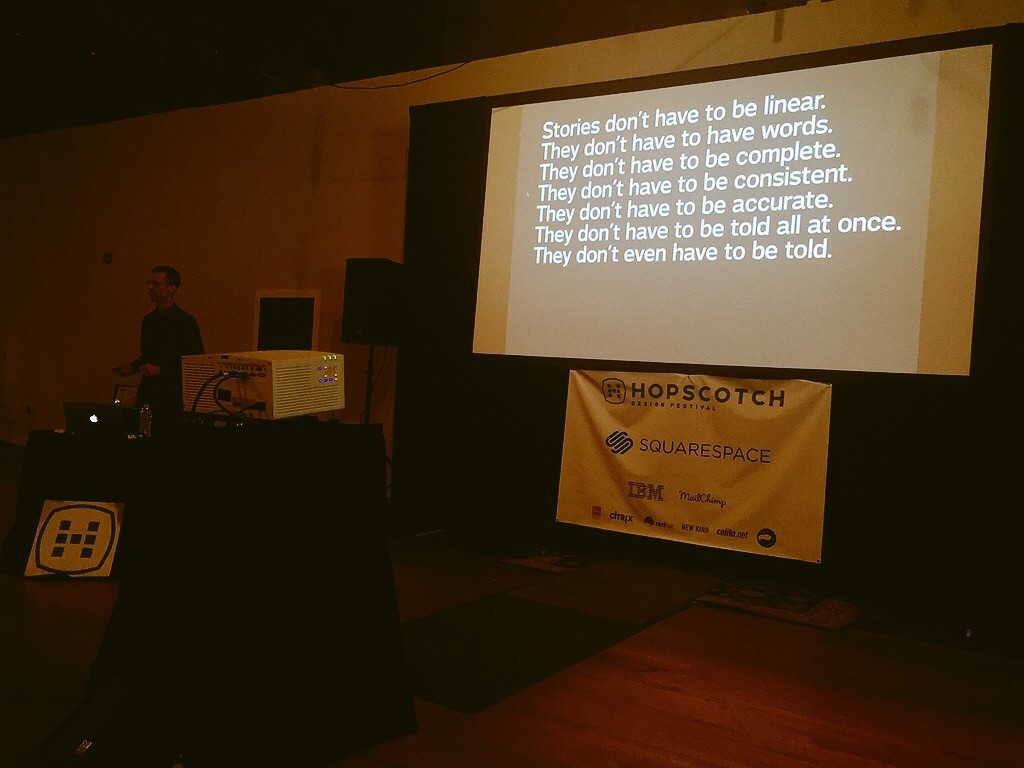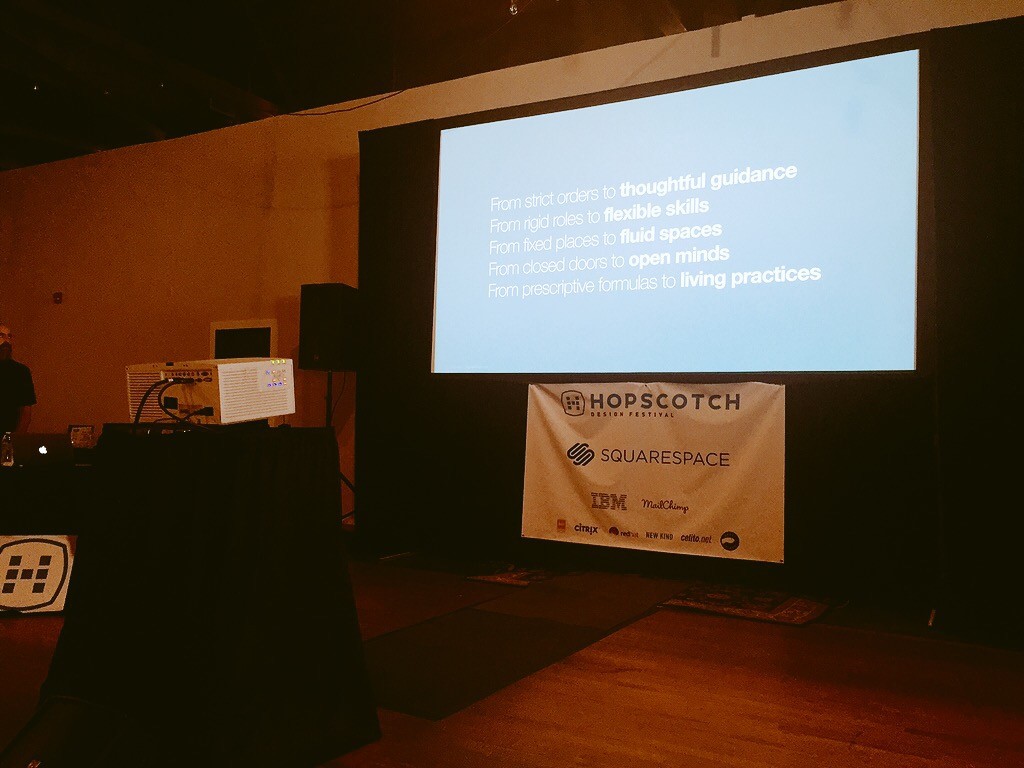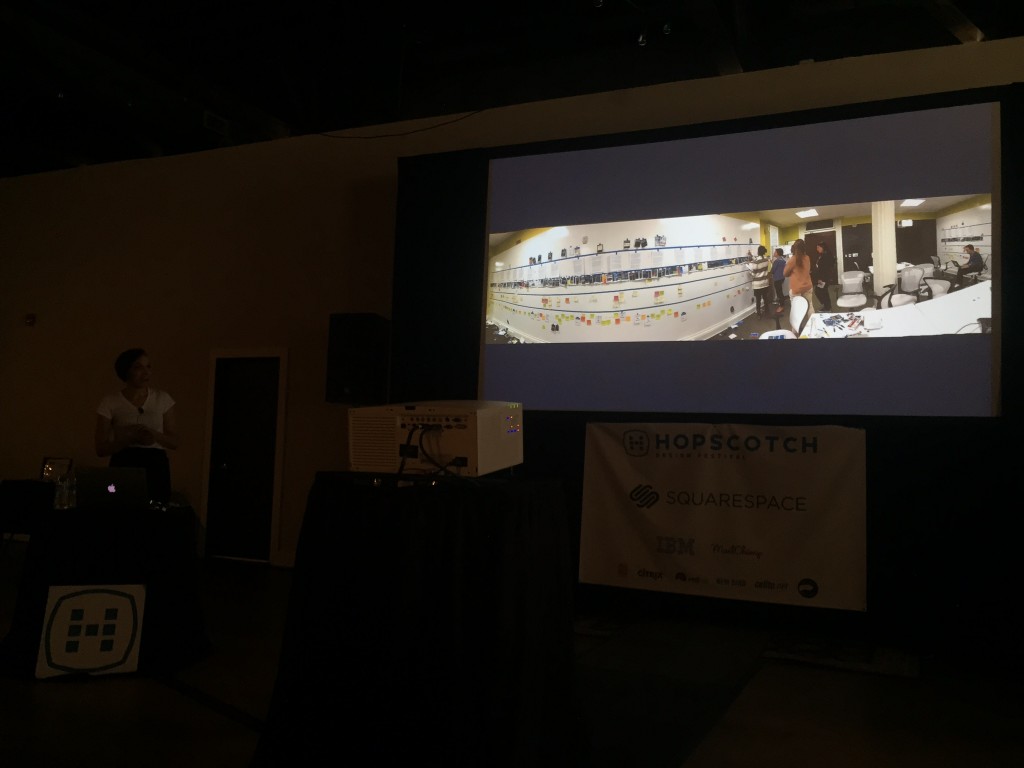Hopscotch Design Festival started with a simple piece of design advice from writer and artist Austin Kleon: don’t break the chain. The idea is to start every day with a goal. Complete the goal, and a big, red “X” goes on your calendar. Day after day, complete the goal and don’t break the chain.
After two days, nine sessions and 38 speakers, my designspiration at Hopscotch centered around four themes:
1. Wake up early
2. Always ask who and why
3. Create a living language
4. Find the best way to tell the story
Here are a few of the designers tips, thoughts and questions.
Wake up early: Almost all of the speakers at Hopscotch Design start their day early and creatively.
+ Fill three pages of your notebook every morning, no matter what. Write on the right hand side, doodle on the left. (Austin Kleon, Writer + Artist)
+ Use the time in the morning to refine your process and generate ideas. (Maria Fabrizio, Wordless News)
+ Take a break from your computer. Have two workspaces: digital and analog. Move between the two to increase productivity and keep ideas fresh and flowing. The computer gives you too many opportunities to press delete while you’re still working through your ideas. (Austin Kleon)
Always ask who and why: The speakers at Hopscotch Design challenged us to question everyday objects and create everything with a purpose.
+ Investigate the meaning of objects. What value do they have taken outside of context? (Christopher Simmons, Principal Creative Director, MINE)
+ Always think about whether new technologies or products are aligned with your values. Always ask “what am I giving?” and “what am I giving up?” (Christopher Simmons)

+ Everyone experiences life through story, and everyone perceives those stories differently. What archetypes are you designing for? What story are you presenting? (Matt Rollins, Iconologic)
+ Provide elements of a story from different points of view. (Matt Rollins)
Create a living language: Designers at Hopscotch discussed the importance of building a solid foundation for future designs.
+ Start small and build a foundation. You can’t do it all the first time. (Ashleigh Axios, Creative Director, The White House)

+ Establish a shared vocabulary for design that provides unity, not uniformity. Give designers the tools and building blocks for designing on brand, but this system doesn’t compensate for design thinking and skill. This process leads to creating design languages for smaller teams that allow people to pick up where others left off. (Adam Cutler, IBM)
Find the best way to tell a story: My favorite sessions at Hopscotch Design focused on storytelling and user experience. The speakers discussed how technology can help present a new side to the story.
+ Explore existing and emerging technologies to tell stories through data and design. Find a side of the story than can only be told through these technologies. This can also be a way to engage new audiences. (Graham Roberts, Senior editor in graphics, The New York Times)
+ Figure out what’s awesome about the information or story, and then determine what’s the best way to tell that story using modern technology. (Josh Goldblum, Blue Cadet)

+ Start with mapping out the data you’re given to understand the content you’re working with before diving into design. (Graham Roberts)
+ We have one shot to communicate the story, so there is an impulse to try to tell as much info as possible. As designers, we have to improve and mediate that experience for readers. Create a choreography between device and the space. Challenge yourself to work outside the screen. (Josh Goldblum)
+ Multi-channel content gives the audience multiple points of entry to access the information. Design experiences that seem natural to users. Fill in the pieces they want before they know they want it. (Ashleigh Axios)
I left Hopscotch Design with a new set of goals for improving my productivity and honing my design process. Start every day with a goal, design everything with a purpose, and tell a story along the way.